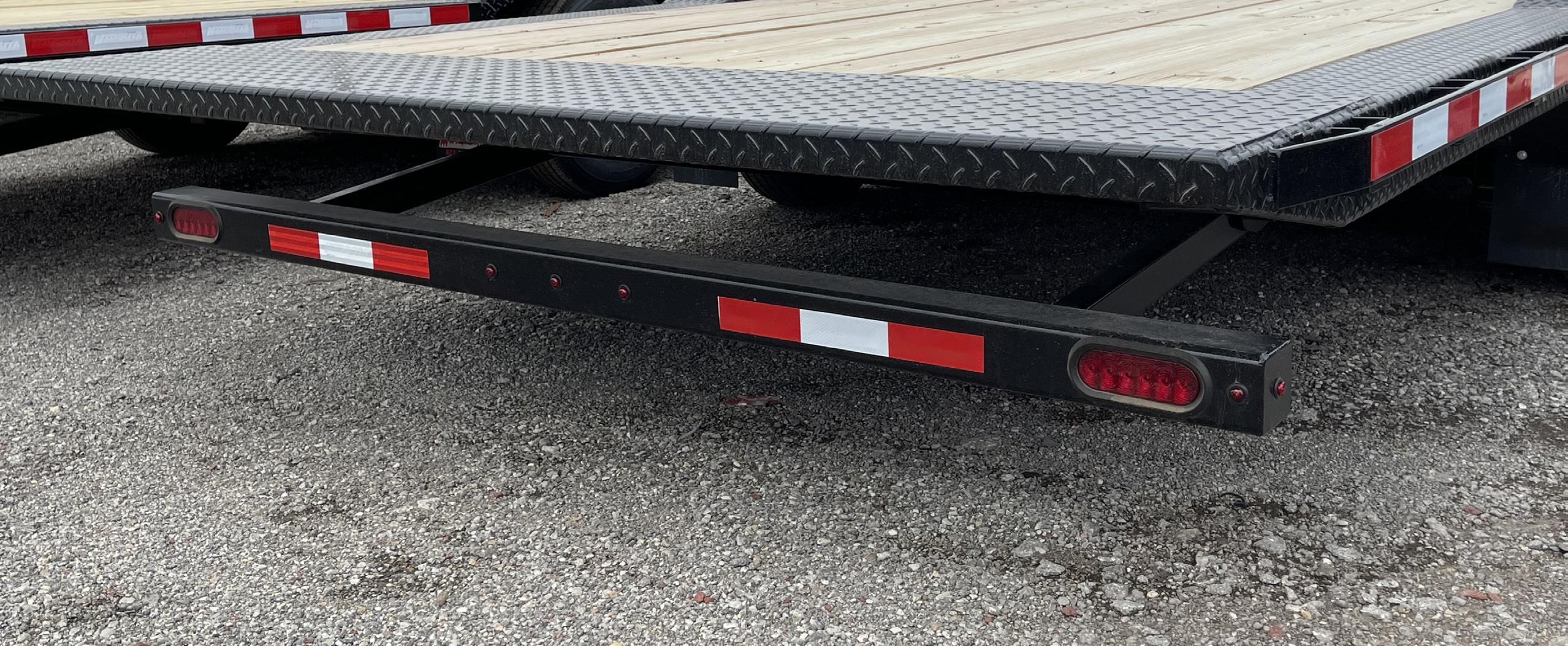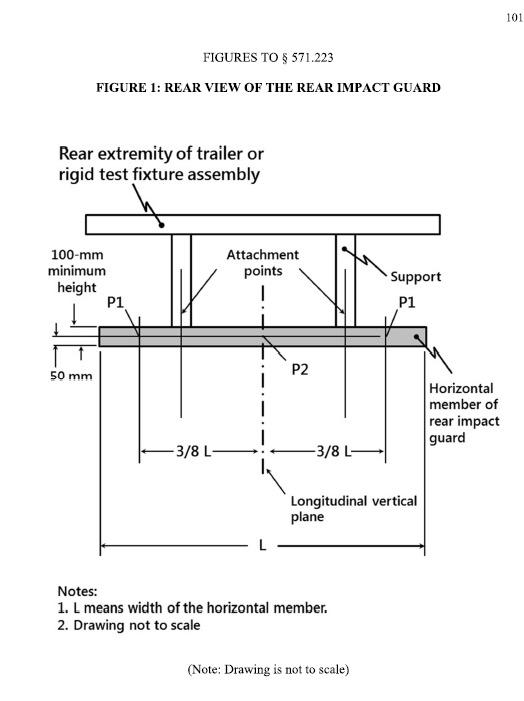
4 minute read
Eagle Hydraulic Inc. › › › › › › › › › › › › › › › › › › › › › › › ›
Rear Underride Guard Protection Amendments
By Alex Stowe, NATM Technical Director
The Department of Transportation (DOT) and National Highway Traffic Safety Administration (NHTSA) have updated the safety standards that apply to rear underride protection and adopted similar requirements to Transport Canada’s standards for rear impact guards. These new standards will require rear impact guards to provide sufficient strength and energy absorption to protect occupants of passenger cars impacting the rear of trailers at new speed guidelines.
Who this applies to:
This change will impact trailers that are subject to the Federal Motor Vehicle Safety Standard (FMVSS) 223 “Rear impact guards” and FMVSS 224 “Rear impact protection.” FMVSS 223 specifies the strength and energy absorption requirements in quasi-static force tests of rear impact guards that are sold for installation on new trailers. FMVSS 224 is a vehicle standard that requires new trailers with a gross vehicle weight rating (GVWR) of 10,000 lbs. or more to be equipped with an impact guard meeting the requirements of FMVSS 223.
These rules exclude pole trailers, pulpwood trailers, road construction controlled horizontal discharge trailers, special purpose vehicles, wheels back vehicles, temporary living quarters, and “low chassis vehicles”, which are defined as “a trailer or semitrailer having a chassis that extends behind the rearmost point of the rearmost tires and a lower rear surface that meets the configuration requirements of S5.1.1 through 5.1.3 of FMVSS 224.”
These updated rules will become effective Jan. 11, 2023, with a compliance date of July 15, 2024. This information is being provided now as NHTSA has indicated early compliance is permitted, and some members may want to conduct testing and install compliant guards before the compliance date of July 15, 2024.
Current Rule
FMVSS 223 and 224 currently help ensure installed rear impact guards are configured low and wide enough to prevent a passenger vehicle running into the rear of a trailer from intrusion underneath the trailer. The regulations make sure the guard is strong enough to withstand a 48 km/h (30 mph) impact of the colliding vehicle, and the guard has strength energy-absorbing capability to further mitigate harm to occupants in the passenger vehicle.
FMVSS 224 requires each trailer to be equipped with a rear impact guard certified to FMVSS 223’s standard and is attached to the vehicle’s chassis in a manner that ensures the ground clearance of the rear impact guard be no more than 560 mm (22inches) from the ground and located not more than 305 mm (12 inches) forward of the rear extremity of the trailer and extend laterally to within 100 mm (4 inches) of each side of the vehicle.
Updated Rule
The updated FMVSS 223 will require rear impact guards to have sufficient strength and energy absorption to protect passenger cars upon rear impact with trailers at 56 km/h (35 mph). This updated speed requirement falls in line with the current Canada Motor Vehicle Safety Standard (CMVSS) on rear impact guards, CMVSS 223.
Further, the update to FMVSS 223 S5.2.1 will require the rear impact guard resist force levels specified below without deflecting by more than 125 mm and without eliminating any load path that existed before the test was initiated. Those force level requirements are:
› A force of 50,000 Newtons (N) applied at test location
P1 on either the left or right side of the guard;
› A force of 50,000 N applied at test location P2; and › A uniform distributed force of at least 350,000 N applied across the horizontal member of the guard.
The updated energy absorption requirement of FMVSS 223 S5.2.2 will require a guard, other than a hydraulic guard or one installed on a tanker trailer:
› Be able to absorb by plastic deformation at least 20,000 Joules (J) of energy within the first 125 mm of deflection without eliminating any load path that existed before the test was initiated; and, › Have a ground clearance not exceeding 560 mm, measured at each support to which the horizontal member is attached after completion of the load application.
A guard could instead demonstrate resistance to a uniform distributed load greater than 700,000 N applied in accordance with the testing requirements of the regulation instead of meeting the 20,000 J energy absorption requirement above, but under this 700,000 N test must still meet the 560 mm ground clearance requirement.
NHTSA-2022-0053 can provide more information on the updated guard test procedures, laid out in the proposed FMVSS 223 S6 “Guard Test Procedures.”
For more information, contact NATM Technical Director Alex Stowe at Alex.Stowe@natm.com. ■














